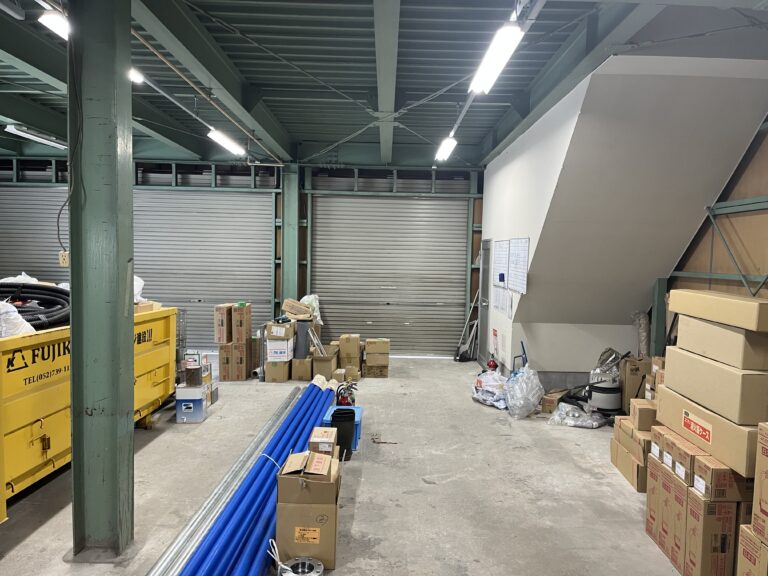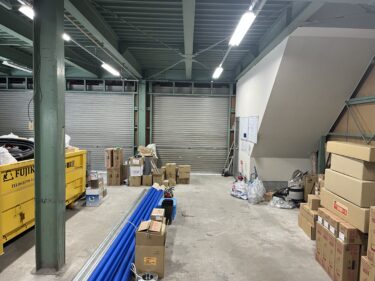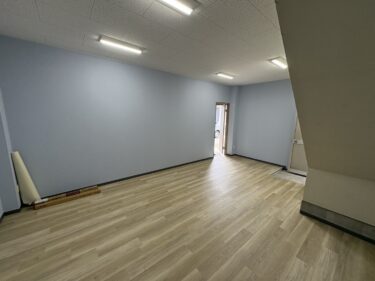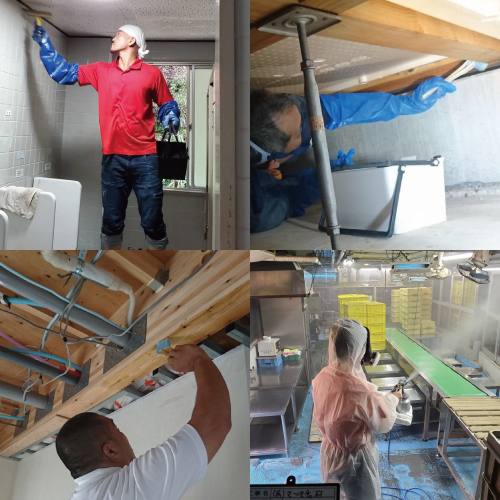1. Mold Risks in Luxury Homes
Luxury residences are often equipped with stylish features and advanced amenities, but they also present a significant mold risk. This stems from their high insulation and airtightness, which inhibit natural air circulation and allow moisture to accumulate. Furthermore, these homes frequently incorporate natural materials that readily absorb humidity—creating a prime environment for mold growth. Often, moisture infiltrates unseen areas like wall cavities or underfloor spaces, spreading extensively before any visible signs appear.
1.1 The Trap of Highly Insulated, Airtight Structures
Modern luxury homes prioritize airtight and well-insulated designs to enhance energy efficiency and comfort. However, without proper ventilation, humidity and airborne pollutants tend to stagnate. Areas exposed to water—bathrooms and kitchens—are especially vulnerable. If a 24/7 ventilation system is improperly designed, it can create negative air pressure, drawing moist external air inside. As a result, mold can develop within wall internals or ceiling voids—areas that remain hidden from view.
1.2 Impact on Property Value and Health
Mold infestation not only affects aesthetics but also accelerates material deterioration, diminishing property value—especially for high-end homes. The presence of musty odors or visible mold can deter potential buyers. Health-wise, mold exacerbates allergies, asthma, and skin irritations—impacting vulnerable groups like children and the elderly. The longer mold remains unaddressed, the more extensive the damage—and the more costly and complex the remediation becomes.
2. Mold Factors in the Kitashirakawa Area
Kitashirakawa, a district in Kyoto’s Sakyo Ward nestled in a mountainous basin, features fluctuating seasonal climate patterns. High humidity during the rainy and autumn seasons easily permeates homes. Traditional wooden constructions prevalent in the area further exacerbate mold issues—making robust preventive measures essential for comfortable living.
2.1 Geography and Climate Characteristics of Kitashirakawa
Situated in a basin surrounded by mountains, Kitashirakawa experiences limited air circulation. This leads to pronounced temperature swings between day and night, often causing condensation in the early morning and evening. In winter, heavy heating increases the risk of condensation and indoor humidity. Moisture accumulation behind walls or in subfloor spaces offers ideal conditions for mold to thrive.
2.2 Challenges of Traditional Wood-Framed Buildings
Many homes in Kitashirakawa are traditional wooden constructions. While wood has excellent moisture-regulating properties, it is equally prone to mold colonization if humidity levels remain elevated. Architectural designs prioritizing aesthetics over ventilation—such as limited vents or tight sealing—further increase mold risk. Regular inspections and discreetly enhancing airflow are vital to preserving structural integrity.
3. Mold Troubles in Luxury Homes of Minami-Morimachi
Minami-Morimachi in Osaka is known for its upscale residences, built around excellent transport links. Yet, its design—especially with below-ground levels or tightly packed houses—can trap humidity. Even newer luxury homes may harbor hidden mold in places like bathrooms, underfloor storage, or behind walls.
3.1 Humidity Generation Mechanisms (Bathrooms, Subfloors, etc.)
Luxury homes in Minami-Morimachi may feature steam saunas or jacuzzis, generating vast amounts of moisture. Even with ventilation systems installed, improper usage may leave humidity unchecked. Subfloor areas, especially if enclosed, can trap ground moisture, causing mold under wooden floors—an infestation that becomes difficult to remove.
3.2 Impacts of Inadequate Ventilation and Maintenance
Even with advanced facilities, luxury homes frequently neglect routine maintenance— causing ventilation filters to block or ducts to fail unnoticed. These issues, often hidden, can spawn mold that standard cleaning cannot mitigate. Often, by the time problems surface, mold has become widespread and difficult to remove without professional intervention.
4. Mold Prevention Challenges in SAGA Arashiyama Homes
SAGA Arashiyama offers picturesque surroundings but also high humidity, increasing mold risks—particularly in luxury homes with open designs such as atria, gardens, and multi-level layouts. The prevalence of wooden and traditional architecture further heightens moisture concerns. Effective mold control must respond to both geographical and structural characteristics.
4.1 Key Areas of Concern (Gardens, Atriums, etc.)
Homes in SAGA Arashiyama often include architectural openings like gardens and atriums that directly expose interiors to external moisture and temperature shifts—promoting condensation. These areas—particularly ceiling voids, stair well hiding spots, and underfloor spaces—are hidden mold hotspots prone to delayed detection. Seasonal inspections, expert-led airflow optimization, and professional assessments are crucial.
4.2 Collaboration with Local Experts for Effective Solutions
Local contractors knowledgeable about regional climate and traditional materials can tailor preservation-safe methods. Standard retail mold treatments risk damaging heritage materials. By adjusting MIST method agents to each substrate, local experts can eradicate mold without harming surfaces. Post-cleanup treatments add resilience, ensuring long-term mold control.
5. Mechanisms of Mold Growth Caused by Negative Pressure
Negative pressure occurs when indoor atmospheric pressure dips below external levels—pulling in humid air, dust, pollen, and mold spores. In high-sealed luxury homes, improperly designed 24/7 ventilation systems can induce persistent negative pressure—leading to moisture ingress and concealed mold growth, especially in wall cavities and ceiling voids.
5.1 Pitfalls of 24-Hour Ventilation Systems
Ventilation systems aim to deliver fresh air continuously, but imbalances—especially from powerful kitchen extractors or bath fans—can create zones of negative pressure. This draws air from other areas without return airflow, causing stagnant humidity and mold-friendly conditions. Properly balanced systems are essential to avoid this phenomenon.
5.2 How Negative Pressure Exacerbates Condensation and Mold
Negative pressure draws in moist external air, particularly during colder seasons when temperature clashes trigger condensation. These hidden condensed pockets fuel mold growth in places like under insulation or inside walls—raising the risk of allergy-triggering spores and structural material decay. Balanced air pressure is thus key to preventing mold proliferation.
6. Safe & Precise Removal via MIST Method®
The MIST Method® offers a corrective alternative to abrasive mold removal practices. By using fine misted application of pH-adjusted cleansing agents, it preserves substrate integrity—making it ideal for luxury and heritage properties. Removing mold without physical abrasion safeguards both appearance and value.
6.1 Tailored Agents & Substrate Protection
Customized pH and concentration formulations correspond to each material—wood, plaster, stone, textiles—ensuring no damage while effectively dismantling mold. The mist delivery system ensures deep penetration, eradicating mold at its roots. Additionally, these agents are safe for residents, including children and pets, facilitating on-site remediation.
6.2 Non-Abrasive Removal Preserves Asset Value
Conventional mold removal often damages high-end materials like polished stone or handcrafted wood. MIST removes mold via selective cell breakdown, preserving surface textures and finishes intact. This non-destructive approach minimizes depreciation and supports long-term property value retention.
7. Importance of Preventive Measures and Anti-Mold Treatment
Once mold is removed, it’s essential to apply preventive and anti-mold treatments to avoid recurrence. In luxury homes with minimal airflow, mold can quickly re-emerge unless preventative strategies are adopted. Ongoing monitoring and use of protective agents become vital in maintaining a mold-free environment.
7.1 Sanitizing Beyond the Surface to Interior Areas
Mold penetrates deep into porous materials—wood, stone, or concrete. Surface-only removal misses hidden colonies, leading to recurrence. The MIST Method®’s fine mist penetrates these interiors, fully sanitizing mold-prone areas—delivering genuine remediation rather than surface masking.
7.2 Noteworthy Long-Term Anti-Mold Protection
Special anti-mold coatings are applied post-cleanup to resist spore adhesion and reproduction. These coatings offer rapid effects and sustained protection while being environmentally safe and harmless to occupants. Comprehensive application throughout the residence ensures lasting mold prevention.
8. Necessity of Professional Inspection and Testing
Identifying mold locations demands more than visual observation—it requires professional equipment like thermal cameras, hygrometers, and microscopes. Expert inspections establish accurate assessment, preventing missed hotspots and guiding precise remediation.
8.1 Visualizing Hidden Mold with Specialized Tools
Professional inspections reveal mold behind walls or under floors using thermal imaging and moisture measurement. Visual documentation of otherwise invisible mold growth enables targeted treatment, avoiding unnecessary widespread disruption.
8.2 Certified Reports from Experts for Transparency
Detailed reports from certified inspectors include mold species, affected zones, humidity levels, and treatment details. These records provide accountability and guide future maintenance. For luxury homeowners, such documentation reassures value preservation and future resale confidence.
9. Regular Maintenance for Luxury Residences
Luxury homes require ongoing maintenance beyond initial build quality. Regular upkeep—including moisture surveillance, ventilation audits, and cosmetic inspections—helps maintain style and structural health and avoids major mold remediation.
9.1 Checkups and Ventilation Optimization
Frequent humidity assessments and seasonal ventilation reviews prevent mold-prone environments. Examination of hidden spaces—wall cavities, attic types, underfloor—should be pursued. Professional sampling of airborne spore levels completes the assessment.
9.2 Tailored Cleaning Plans for Residents and Owners
Servicing by mold-aware cleaning professionals ensures customized care based on home layout and usage patterns. Planned schedules that consider structural hot spots and effective techniques preserve both hygiene and youthful appearance.
10. Effective DIY Ventilation and Dehumidification Guide
Complementing professional treatments, homeowners can adopt daily measures to reduce mold risk. Even luxury homes benefit from simple household practices—effective monitoring and moisture control are key.
10.1 Ideal Humidity Management: 40–60%
Maintain indoor humidity between 40–60%, as mold thrives above around 70%. Install hygrometers in multiple rooms and use humidifiers or dehumidifiers as needed—especially during spring rains or winter condensation.
10.2 Practical Ventilation and Dehumidification Tips
Open windows several times daily, deploy fans to circulate air, use desiccant packs in enclosed areas, and run exhaust fans in kitchens and baths consistently. For storage or basement spaces, use compact dehumidifiers or moisture packets. A habitually ventilated home environment significantly reduces mold risk.





